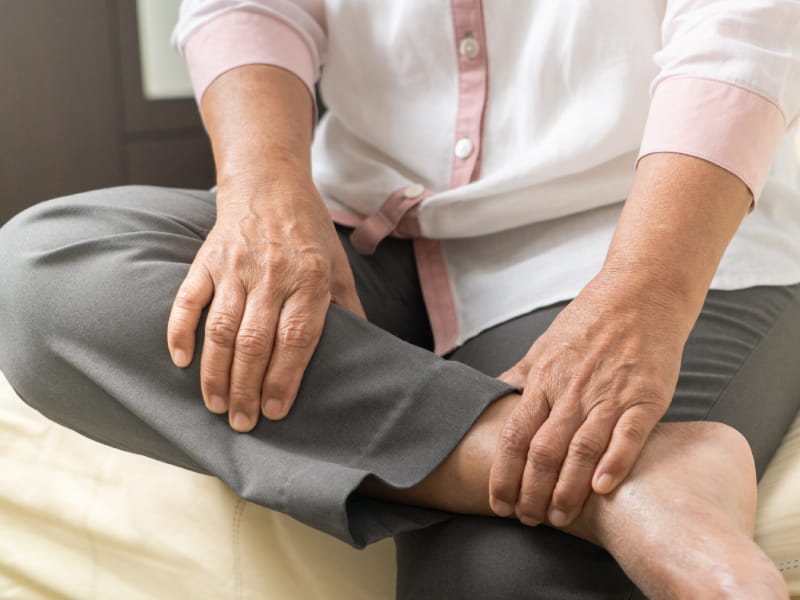Peripheral arterial disease (also known by the English acronym PAD) is a disease characterized by narrowing the lumen of arterial vessels (arteries). That is, the vessels that carry oxygen-rich, nutrient-rich blood from the heart to the periphery of the body, including:
- upper limbs,
- lower limbs (this is the body area most frequently affected by the peripheral arterial disease),
- organs of the head (brain),
- Organs of the trunk (intestine, stomach, e.t.c).
The reduction in the caliber of the arteries constitutes an obstacle to normal blood flow, which will therefore reach the tissues downstream of the obstruction in reduced quantities, which, consequently, will receive less oxygen and nutrients.
In the milder forms, it manifests itself without any symptoms, with the progression of the obstruction may appear:
- muscle aches,
- numbness and tingling,
- The affected limb temperature changes.
The recognition and correct treatment of the disease is vital to prevent the increased risk of developing cardiovascular events such as stroke.
Prognosis depends on the timeliness of diagnosis, the severity of the obstruction, and the patient’s adherence to therapy.
If you want to improve the prognosis, it is essential to:
- avoid smoking
- control your weight and lose weight if necessary,
- Keep blood pressure, blood sugar, cholesterol, and triglycerides under control.
Causes
The narrowing of the vessel is generally due to the presence of an atherosclerotic plaque, aggregate of cholesterol and fibrous material is deposited inside the artery wall, thickening and reducing the vessel’s lumen.
The progressive accumulation of fat and other material reduces the passage of blood more and more.
Atherosclerosis is favored and caused by the coexistence of several conditions:
- cigarette smoke,
- men are more affected than women,
- age,
- high triglyceride values ,
- elevated cholesterol values
- high homocysteine values
- diabetes,
- hypertension (high blood pressure),
- inflammatory diseases,
- systemic lupus erythematosus,
- exposure to ionizing radiation,
- obesity,
- Sedentary life.
Other rarer causes of occlusion are:
- vasculitis that is, inflammation of the vessel wall itself,
- trauma,
- anatomical abnormality in which a muscle, tendon, or other vessel compresses the artery,
- Spasm of smooth muscle, which occurs in the formation of the artery wall.
Symptoms
The symptoms of peripheral arterial disease are due to the reduced blood flow downstream of the obstruction and the consequently reduced supply of oxygen and nutrients; they generally appear when 70% of the vessel lumen is obstructed. Before this threshold, the disorder is asymptomatic.
Symptoms vary depending on the body area affected, but the condition mainly affects the legs in most cases. In this case, the characteristic sign of the peripheral arterial disease is intermittent claudication, the perception of a cramp-like pain following an effort, the localization of which changes according to the affected artery (usually a calf, but can also affect a different portion).
The pain will tend to manifest itself in the calf even during a simple walk and then cease immediately at the end of the movement (which is why arterial disease of the lower limbs is also called window disease).
It is essential to pay attention to how many meters you can travel before the pain arises. And therefore, you feel the need to stop (more or less than 150-200 meters) since this is a question that the doctor will undoubtedly ask.
In more severe cases, the following accompanying symptoms also appear:
- pale and cold skin,
- redness of the limb,
- changes in hair and nail growth,
- pain even at rest,
- ulcers,
- Erectile dysfunction in men.
Symptoms of arterial disease tend to develop slowly and gradually over time; in case of sudden or rapidly worsening manifestations, it is recommended to seek medical attention immediately because the cause could be of a different and more urgent nature.
Complications
The peripheral arterial disease does not expose the patient to immediate risk. Still, if the underlying atherosclerosis process is not recognized and treated, it can develop severe and potentially fatal conditions.
If blood flow to the legs is severely restricted, a condition of critical ischemia of the lower limbs can develop, an extremely serious and difficult to treat complication, manifesting as:
- severe burning in the legs and feet that persists even at rest,
- pale skin,
- the appearance of wounds and ulcers (open sores) on the feet and legs that do not heal,
- loss of muscle mass in the legs
The injuries that occur can become infected and worsen to cause tissue gangrene (death), requiring the limb to be amputated.
The blockage of blood supply to the legs can also occur in other areas of the body, for example affecting the arteries that feed the heart and brain and putting you at risk of:
- coronary heart disease,
- angina,
- heart attack,
- Stroke.
Conclusion
Quick treatment is the remedy to avoid the complications of peripheral arterial disease. This treatment can be non-surgical PAD treatments that will help amputation prevention. Visit Imaging and Interventional Specialist to book a 15 minutes free consultation for all peripheral arterial disease cases.
Also Read: How To Order Medicines Online In Canada.



